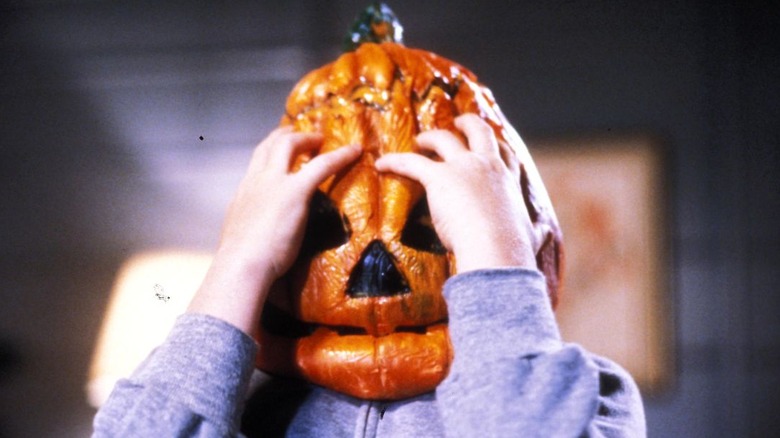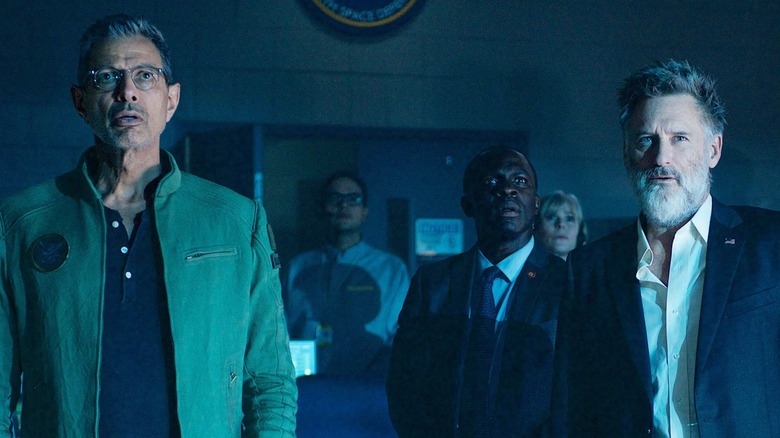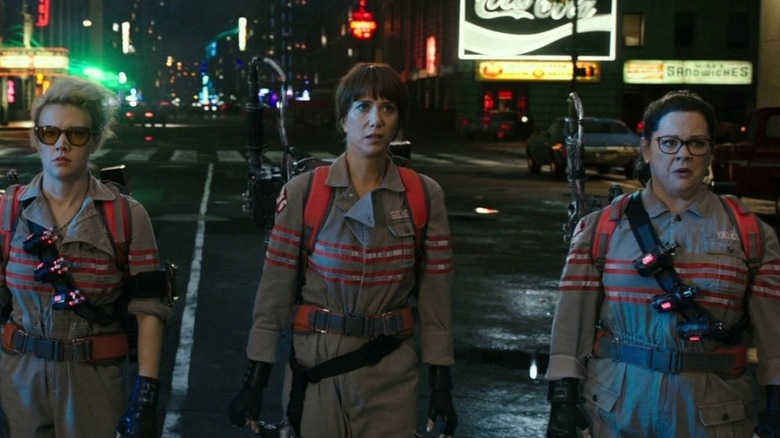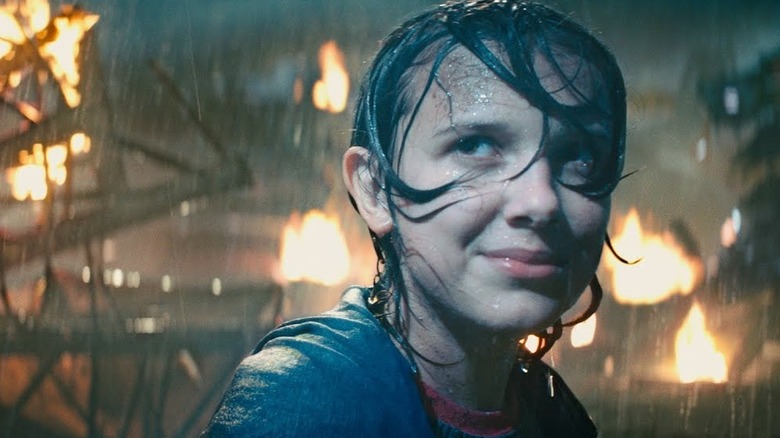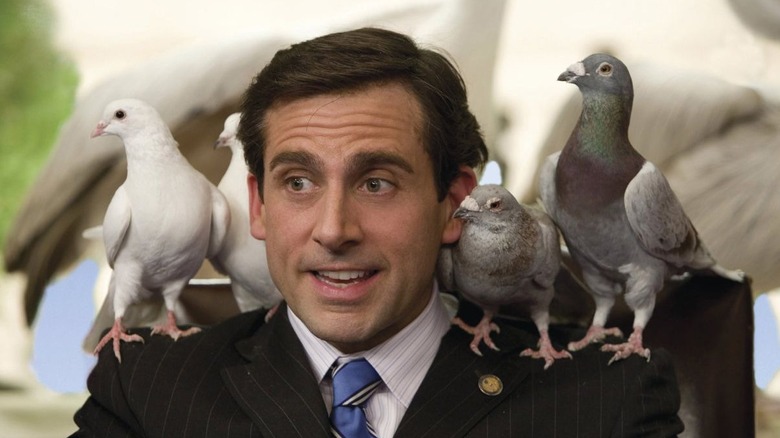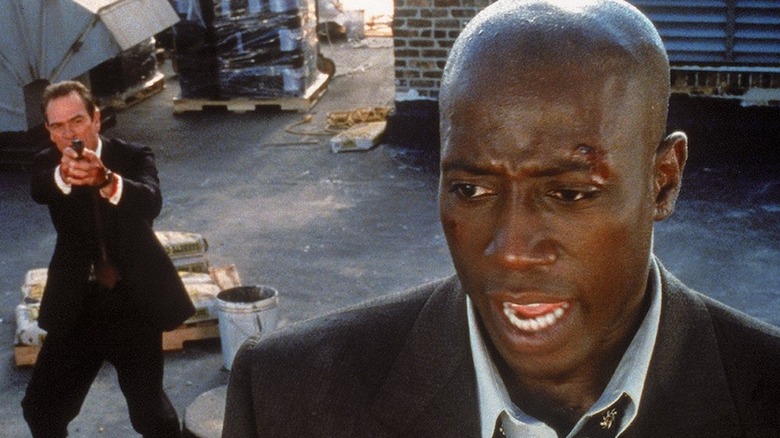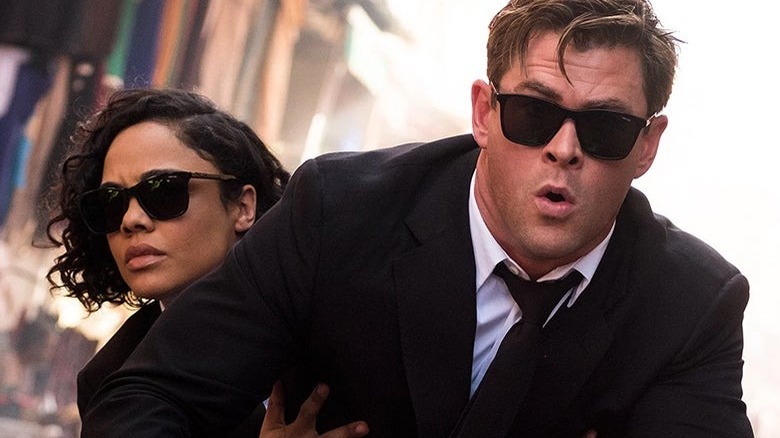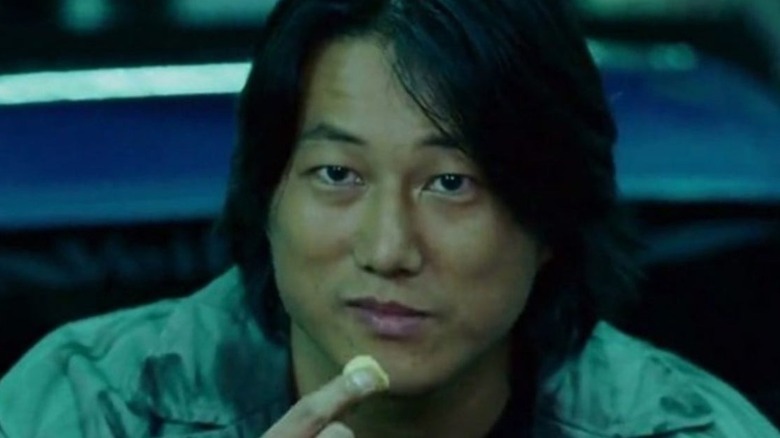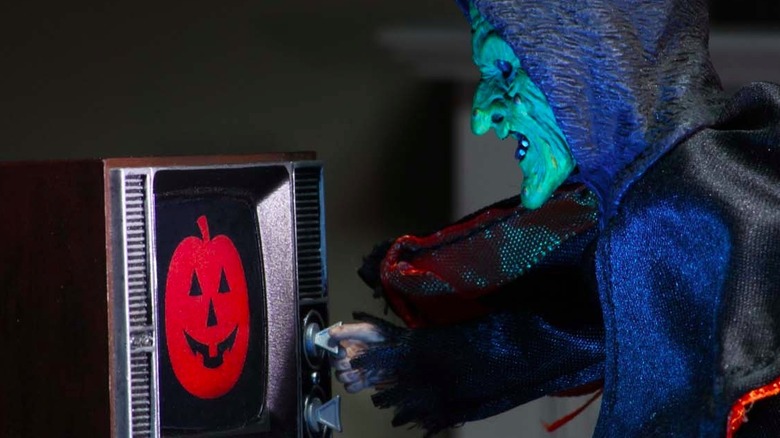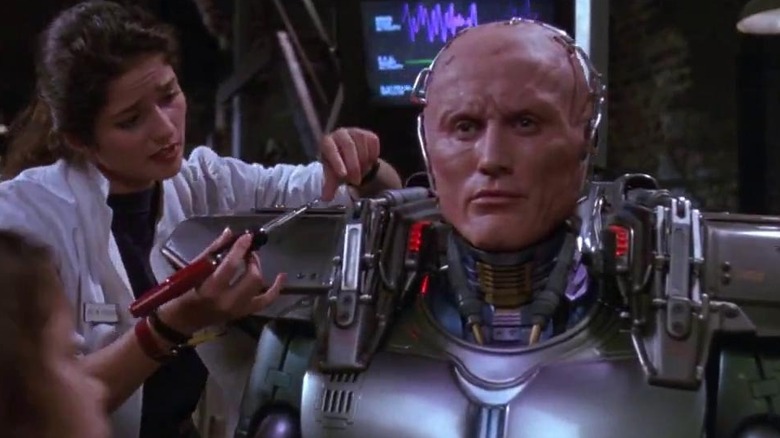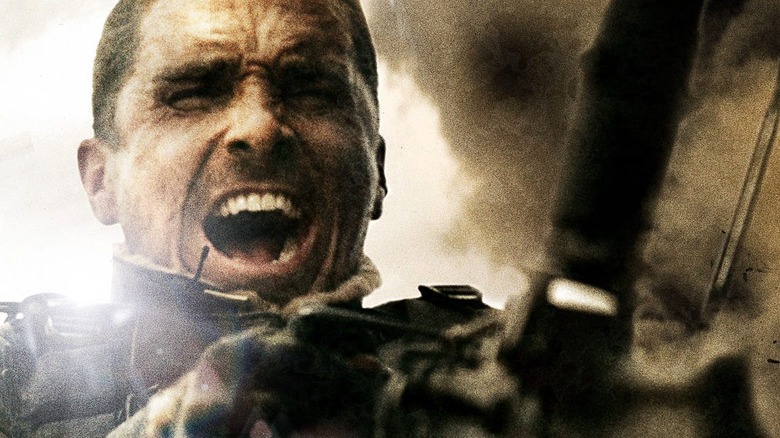Sequels Without Original Cast Members That Bombed
Making a blockbuster movie would seem like a pretty simple formula: cool concept/popular IP + strong characters + popular cast members = profit. Also, setting a sensible budget matters too. Spending $170+ million on an "Avengers" or "Star Wars" movie is one thing; spending that on an R-rated movie or an untested franchise turns what could be a sure thing into a movie that has to break records just to break even. Problems arise when movie studios don't read the box office tea leaves, removing key elements to success.
It's one thing to spend multiple millions on an absurd IP nobody cares about that crashes out of the gate (e.g. "Battleship" and "John Carter"). It's another to take a popular franchise and remove some of the key parts that made it popular in the first place, such as characters and cast. While movie stars may not be as critical to a movie's success as they once were, the right actor in the right role still makes a huge difference. If you put somebody else into a "Pirates of the Caribbean" film, for instance, you're taking a gamble.
Moviegoers don't just want to see a franchise movie — they want to see the cast and characters that made the franchise so beloved in the first place. Some movie studios had to learn that lesson the hard (and expensive) way — here are just a few such sequels, without original cast members, that bombed.
Independence Day: Resurgence
For a solid decade from 2002 to 2012, Will Smith could do no wrong at the box office. Smith did it largely without relying on sequels, headlining ten hits that were star vehicles, including risky big-budget movies like "I, Robot" and "Hancock." However, Smith's "butts-in-seats" drawing power started to slide with 2013's "After Earth." Today, Smith is still a star, but more as an added value in movies like "Aladdin" and "Bad Boys 4 Life."
When most movie stars' careers start to slide, they hit the panic button and go back to the franchises that made them famous in the first place — and sure enough, Smith has made several "Bad Boys" and "Men in Black" sequels. But as a movie star, he really got his start with "Independence Day," a 1996 $817 million worldwide surprise hit that for decades held onto a fanbase with fond memories of the original alien-invasion flick. So, after filmmakers Dean Devlin and Roland Emmerich fought the studio to cast Smith cast in the first film, why wouldn't he star in its 2016 sequel "Independence Day Resurgence"?
According to Smith, he wanted to do "Suicide Squad" instead. So, Fox plowed ahead with the sequel without their biggest star, even if actors like Jeff Goldblum and Bill Pullman did return. The film bombed with $384 million worldwide on a $165 million budget, while "Suicide Squad" nearly doubled that with $746 million worldwide. As it turns out, moviegoers didn't just want to see evil aliens; they wanted to see Will Smith punching them.
Ghostbusters: Answer The Call
"Ghostbusters" was a genuine cultural sensation in 1984, earning $295 million worldwide, and coming in second at the year-end worldwide box office. While the film's 1989 sequel isn't well-regarded, it was still a huge deal, opening to a then-record $29 million (until "Batman" broke it literally the next week), and earning $215 million worldwide. Big money, but a big 28% drop, so "Ghostbusters II" left a bad taste in moviegoer's mouths that would leave the franchise dormant for 27 years. While sequel gaps of 5+ years were once considered dealbreakers, beloved franchises ("Star Wars", "Indiana Jones", "Rocky") are permitted to break that rule — so when people were still wearing "Ghostbusters" t-shirts and singing Ray Parker Jr.'s song decades later, a reboot seemed in order.
When it was originally released in 2016, this reboot was simply called "Ghostbusters," but many folks referred to it as some variation of "The Girl Ghostbusters Movie," because it had female leads. So in essence, the only connection to the original beloved film was that both sets of characters capture ghosts.
Despite Bill Murray, Dan Aykroyd and Ernie Hudson appearing in brief "torch-passing" cameos, moviegoers who waited decades for another sequel didn't want to see any torches being passed — they wanted the originals. It also probably didn't help that online chatter in the months leading up to the film revolved around dumb, petty arguments about whether women could/should be Ghostbusters. It's rarely a good sign when instead of talking about how excited people are to see your upcoming movie, they're angrily debating such nonsense.
Disappointing your core audience is also not usually a good strategy, particularly when you're making a $144 million blockbuster. So, when Paul Feig's "Ghostbusters" (later re-marketed as "Ghostbusters: Answer The Call") arrived in theaters starring Kristen Wiig, Melissa McCarthy and Kate McKinnon, it opened to $46 million (not much more than "Ghostbusters II" 27 years earlier) and closed with $229 million worldwide ($67 million less than "Ghostbusters" 32 years earlier). While many blamed sexism for the movie's failure, the more likely culprit was making a "Ghostbusters" movie without the original Ghostbusters.
Godzilla: King of the Monsters
A common cliche in movie fan culture is: "Nobody cares about the humans in a monster movie." So nobody cared about Ripley in "Alien?" Or Carl Denham and Ann Darrow in "King Kong?" Yes, you go to a monster movie for the monsters, but you care about it because of the characters.
A good case in point is 2014's "Godzilla." The anticipation for the film was substantial, culminating in a much higher-than-expected, MonsterVerse franchise high, $93 million opening weekend. However, poor word-of-mouth led to the movie sinking like a stone (or a giant radioactive reptile), finishing with a disappointing $200 million domestically — though its $529 million worldwide softened the blow. So, what happened?
"Godzilla's" trailer was one of the best of the past 20 years, headlining a marketing campaign that put Bryan Cranston front and center. Now, Cranston isn't necessarily an A-list movie star, but in 2014 he was just coming off his career-defining work in "Breaking Bad," so his presence lent "Godzilla" serious credibility. However, while Cranston was marketed as the lead, he was killed off in the first half-hour.
As a result, Cranston wasn't in "Godzilla: King of the Monsters" at all. Without any clear connection to the forgettable 2014 film, "Godzilla: King of the Monsters" opened to a tepid $47 million and ended its run at $383 million worldwide on a $170 million budget. Not a bomb, but definitely a disappointment. The lack of Cranston wasn't the cause, but a symptom: Moviegoers do care about humans in monster movies.
Evan Almighty
Whether it's Dwayne Johnson and Will Smith in modern times, or Arnold Schwarzenegger and Sylvester Stallone back in the day, there are some movie stars audiences simply enjoy watching in special effects movies. Jim Carrey is different — he is his own special effect. So making sequels to Jim Carrey movies without Jim Carrey may be the most nonsensical thing on this list. Yet it happened not once, not twice, but thrice: "Dumb and Dumberer: When Harry Met Lloyd" in 2003, "Son of the Mask" in 2005, and "Evan Almighty" in 2007.
Why no Carrey? He doesn't like sequels, and if these were the scripts he was being offered, it's easy to see why.
"Dumb and Dumberer" face-planted first, earning $28 million worldwide on a $30 million budget. You would think such a performance would put the brakes on "Son of the Mask" and "Evan Almighty," but surprisingly the former followed with Jamie Kennedy in the lead and $59 million worldwide on a mind-boggling $100 million, and the latter had Universal spending $175 million (the most ever for a comedy at that point) for $174 million worldwide on "Evan Almighty," a big budget "Bruce" sequel with the then-rising-star Steve Carrell.
When the smoke cleared, the studio had spent more than double the "Bruce Almighty" budget of $81 million on a Jim Carrey sequel without Jim Carrey. That's dumb, dumberer and dumbest.
U.S. Marshals
Harrison Ford's box office earnings are $5.2 billion domestically and $10 billion worldwide. That would be impressive enough, until you consider his biggest hits (the "Star Wars" and "Indiana Jones" trilogies) were released decades ago. When adjusted for inflation, "Star Wars" alone made $1.5 billion worldwide, while five of the top twenty highest-grossing movies ever adjusted for inflation starred Harrison Ford. But Ford also has had lots of big hits that weren't related to "Star Wars" or "Indiana Jones."
One of these was 1993's "The Fugitive," which earned $183 million domestically and $353 million worldwide, finishing third at the year-end box office. While Tommy Lee Jones stole the show (and won an Oscar) for his role as U.S. Marshal Samuel Gerard, it was Ford who put the butts in seats.
So, perhaps "U.S. Marshals," a sequel to "The Fugitive" focused on Gerard, was doomed from the get-go because it lacked the key ingredient to the original's popularity: Harrison Ford. The film did add in Wesley Snipes and Robert Downey Jr. (about 5 years before he would finally conquer his demons and turn his tabloid-fueling personal life around) but "Marshals" failed to find an audience, earning $57 million on a $60 million budget in 1998.
While it doesn't seem like Ford should have played the titular fugitive again (after all, how much trouble could this guy get into?), it does seem clear that "U.S. Marshals" probably shouldn't have been made in the first place.
Men In Black: International
In 1997, Will Smith was riding high from "Independence Day" and had already become a "butts-in-seats" box office draw. Meanwhile, Tommy Lee Jones was riding high from "The Fugitive" and "Batman Forever," and had established himself as the most valuable supporting actor of the 1990s. Put these two together in a special effects-driven, action-comedy and you get "Men In Black," which earned $587 million worldwide, finishing third for the year behind only "Titanic" and "The Lost World: Jurassic Park." To quote Will Smith: "Dayum."
While two "Men In Black" sequels failed to reach the same pop culture heights, both made a lot of money. "Men In Black 3" actually made more worldwide (thanks to the benefit of 15 years of inflation and a bigger international market). However, each of those three films featured two key ingredients: Will Smith and Tommy Lee Jones.
In 2019, Sony Pictures tried to reboot the franchise without Smith or Jones, replacing them instead with Chris Hemsworth, Tessa Thompson, and Liam Neeson. "Men In Black: International" opened to $30 million ($21 million less than "Men In Black" 22 years earlier), and closed with $80 million domestically and $253 million worldwide, $188 million less than the previous franchise low, "Men In Black II", earned in 2002.
Thanks to a modest $110 million budget, "Men In Black: International" probably squeaked by with a small profit, but the writing was on the wall. No Smith, no Jones, no audience.
The Fast and The Furious: Tokyo Drift
"The Fast and The Furious" franchise has been a wild ride — on screen and behind-the-scenes as well. The franchise went from popular and profitable in the early 2000s to a billion-dollar blockbuster franchise in the 2010s, all while charting the character's perfectly natural progression from LA street racers to international super spies. "The Fast and Furious" franchise does have one black sheep, however: 2006's "The Fast and The Furious: Tokyo Drift." Where this prequel/sequel/spin-off fits into the overarching "Furious" timeline is a topic for debate among fans, but this much is clear: It crashed, badly.
On an $85 million budget, "Tokyo Drift" earned only $62 million and $157 million worldwide. The impetus seems clear: it starred none of the original cast, largely because stars like Vin Diesel and Paul Walker had become substantially bigger stars and were building their careers elsewhere.
"Drift" nearly killed the franchise — but a closing scene-cameo from Diesel gave hope for a return. So, Universal got the band back together for 2009's "Fast and Furious", saving the series and adding billions of dollars to their bank account. The key takeaway? You can't break up the family.
Halloween III: Season of the Witch
It's one thing to make a sequel without the original cast — but without the central premise? It'd be like making a "Jaws" sequel not about a killer shark, but an epidemic at a resort.
Enter "Halloween III." "Halloween" invented the modern slasher film in 1978, putting a face to the invisible killer of 1974's "Black Christmas" with a charismatic uber-baddie named Michael Myers. Perhaps just as critical was Jamie Lee Curtis as scream queen Laurie Strode and Donald Pleasance as Michael's haunted hunter Sam Loomis. Together, the trio propelled the original "Halloween" to $70 million worldwide on a $325,000 budget. While the $25 million of 1981's "Halloween II" was a big drop-off, on a $2.5 million budget it did just fine.
But series creator John Carpenter yielded the director's chair for "Halloween II," and when he and series producer/wife Debra Hill were asked to put together a third film, they agreed to participate only in Myers was put on the back-burner and the "Halloween" name would be used as more of an anthology title (like "Night Gallery" or "The Twilight Zone") than a Myers signifier.
"Witch" is about an evil conglomerate that turns kids' heads into bugs when they wear a mask and watch a TV show. While "Witch" made money ($14 million on a $2.5 million budget in 1982), it was such a departure that the series took a time out for six years. By 1988, Michael Myers was back, and he has been ever since.
It should be mentioned, however, that despite "Season of the Witch" underperforming at the box office, it has gone on to become a creepy cult favorite — in no small part because of its ominous, "London Bridge is Falling Down"-inspired jingle from the Silver Shamrock Halloween mask commercial.
As far as the rest of the franchise is concerned, Pleasance appeared in 3 more "Halloween" movies — one of which was released just after his death and featured a dedication in his name. More than twenty years later, the franchise's secret weapon continues to be Curtis' Laurie Strode. With Curtis leading the cast, "H20" made $55 million worldwide in 1998, while the David Gordon Green-rebooted "Halloween" that caught up with Strode in 2018 earned $255 million worldwide and spawned two sequels.
Robocop 3
Despite its B-movie title, Paul Verhoeven's sci-fi/action satire "RoboCop" earned $53 million worldwide in 1987, as well as a reputation for being one of the best action movies of the 1980s. A big reason was the man wearing the robot suit: Peter Weller. The onetime "Buckaroo Banzai" came back for "RoboCop 2," which earned $45 million in 1990, but was over the franchise by the third film in 1993.
As it turns out, moviegoers were too. With Robert John Burke stepping into the suit, "RoboCop 3" bombed with a dreadful $10 million worldwide, a massive 75% drop from the second film and 80% drop from the first. This is despite (or maybe because of) "RoboCop 3" being rated PG-13, not R like the first two, presumably because the filmmakers wanted to expand the potential audience. So much for that.
While it's unfair to blame the "RoboCop 3" failure on Burke replacing Weller (the series seemed to be running out of gas anyway), it's hard to deny that the drop between the first two films and the third — both in quality and box-office — was gigantic.
Terminator Salvation
"The Terminator" made stars out of filmmaker James Cameron and actor Arnold Schwarzenegger. "Terminator 2: Judgment Day" made them icons. Hollywood has been trying to recapture the magic ... again and again and again ... ever since.
"The Terminator" was an out-of-nowhere sleeper hit in 1984, opening to $4 million and legging it out to $78 million worldwide on a $6 million budget. "Terminator 2" took a $100 million budget and turned it into a $515 million blockbuster, beating even Disney's "Beauty & The Beast" to top the year-end box office charts (with an R-rating, no less). In hindsight, maybe the franchise should have thrown in the towel at that. But there was more money to be made ... if only the studio could figure out how.
Cameron was out for 2003's "Terminator 3: Rise of the Machines," which was Arnold's last lead role before he became The Governator. On a $170 million budget, the film earned a tidy $433 million worldwide. In 2009, Warner Brothers tried to relaunch the franchise without Arnold at all (except as a CG cameo) for "Terminator Salvation," investing a bafflingly high $200 million in the Schwarzenegger-less sequel — and the most memorable thing to come out of it was Christian Bale screaming at poor Shane. The movie bombed with $125 million domestic and $365 million worldwide. By 2015's "Terminator: Genisys" not even Arnold could save the franchise (but China could), while "Terminator: Dark Fate" tanked worldwide despite reuniting Arnold, Linda Hamilton, and producer James Cameron. Hasta la vista, baby.
Predator 2
If peak 1980s Arnold Schwarzenegger battling a 7-foot tall killer alien gets your blood pumping, well, you're not alone. Moviegoers didn't "get to da choppa," but they did flock to the theater in 1987 to see "Predator." On an $18 million budget, "Predator" earned $59 million domestically and $98 million worldwide.
However, rather than become the "Predator" franchise's Lt. Ellen Ripley, Schwarzenegger opted out of the film's sequel over $250,000 (a good cardiologists' salary, but less than Schwarzenegger's cigar budget). So who would take his place? Stallone? Van Damme? Gibson? No, Danny Glover. Uh, okay.
Look, Glover's a fine actor and was great in the "Lethal Weapon" franchise, but the guy who was "too old for this ****" was not a credible replacement for Schwarzenegger, or a believable challenger for the Predator monster. Despite nearly doubling the original's budget to $35 million, "Predator 2" managed a minuscule $28 million domestically and $54 million worldwide. Numbers like that typically kill a franchise, but thankfully for Fox the "AVP" series came along to save both franchises. While quality control has continued to be an issue, the franchise made money until 2018's "The Predator," which earned a "Predator" solo franchise high of $159 million worldwide ... but on a ridiculous $88 million budget. In retrospect, perhaps Arnold was smart to jump ship.
